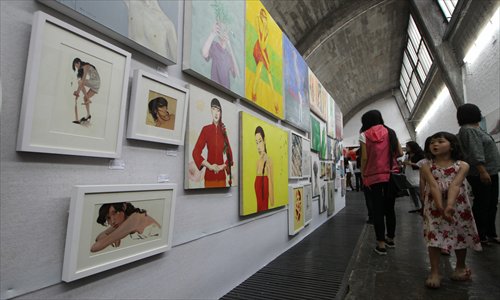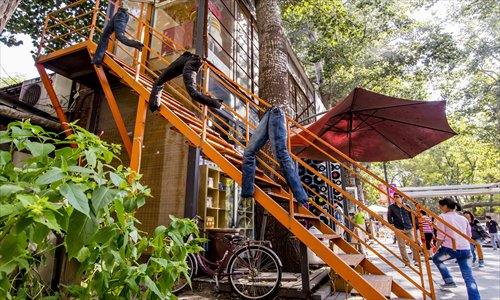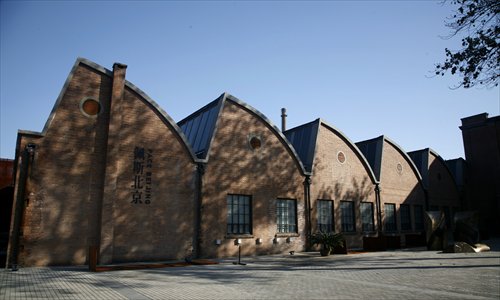Small galleries big ideas



On a mild weathered Sunday, a group of tourists make their way through the 798 Art Zone, led by their flag-toting, hat-wearing guide.
"I can't tell these galleries apart," joked one tourist to his friend.
Contemporary art has always been a way to challenge perceived notions of art, and some small gallery owners in 798 are hoping to shake up the monotony plaguing the area.
When the 798 Art Zone opened in 2003, creative Chinese contemporary artists, given a space to create and work, flocked to the area. It's an old story: up-and-coming artists used to be drawn to the former factory area for its cheap rent and the possibility of large, open gallery and studio spaces. It was once an area for creativity and open experimentation. But with no rent control, the district has seen a wave of gentrification and commercialization, with throngs of tourists going from gallery to gallery, unable to tell the difference between the majority of venues and works of art.
More recently, galleries previously located in 798, such as F2, have closed and moved on. But despite this unfavorable environment - paired with declining auction sales of contemporary art - some independent curators remain undeterred in starting up contemporary gallery spaces in 798, hoping to spearhead a new movement.
Wang Ying, the former art director of Tokyo Gallery in 798, is launching her own Gallery Ying, located across from Pace Gallery, this Sunday, March 24.
"The best time for the art market was from 2003 to 2008, with artists like Wang Guangyi and Zhang Xiaogang," said Wang, referring to two pioneering artists who rose to fame during the boom of China's contemporary art industry.
But when Wang, who attended university in Japan and spent more than a decade overseas, returned more permanently to Beijing in 2011 to run Tokyo Gallery, she saw many foreign galleries based in China move out due to difficulties in operation and the tough hit the seemingly unstoppable art market was taking.
"Everyone knows that right now the environment is not ideal," said Wang.
One way for Wang to change the environment was to highlight international artists, not just Chinese contemporary artists. For bigger galleries to do this, the risk in investment would be too high. In this way, Wang says, smaller galleries actually might be better able to take these new kinds of risks.
"Foreigners in Beijing … have their reasons for being here. These artists come from different backgrounds and cultures. How they process information about China's culture and understand it comes out in their art, which will be different and representative of the times," said Wang.
But at the moment, few Chinese collectors have a full understanding of the international contemporary art market, focusing more on investment or pure decoration. Plus, they want to buy mostly Chinese-produced contemporary art, agree many art insiders.
Miika Benedetti is a young contemporary artist living and working in Beijing who welcomes such a change.
"If foreign artists are coming to Beijing in the way that so many Chinese artists went to New York, they are describing a time where foreign people actually want to be in China. That's documenting a reality crucial to our time," he said.
Of course, not everyone is convinced that this is the new direction.
Eva Lee, a curator at the Soka Art Center in 798 said that like other galleries in the area, most of their space is devoted to Chinese artists, as buyers want to see an authentic representation of China, through the eyes of Chinese artists.
"We should look to traditional Chinese artists to extract this contemporary cultural meaning," she said.
She added that this doesn't mean they don't pay attention to foreign artists. Their current exhibition, The Warm Rivers of Spring, features a Korean artist.
In any case, change in the art industry will not come quickly.
"A lot of things (in China's art scene) get promoted quickly - and then suddenly everyone is doing it. But I don't think art is something you can just quickly promote," Wang said.